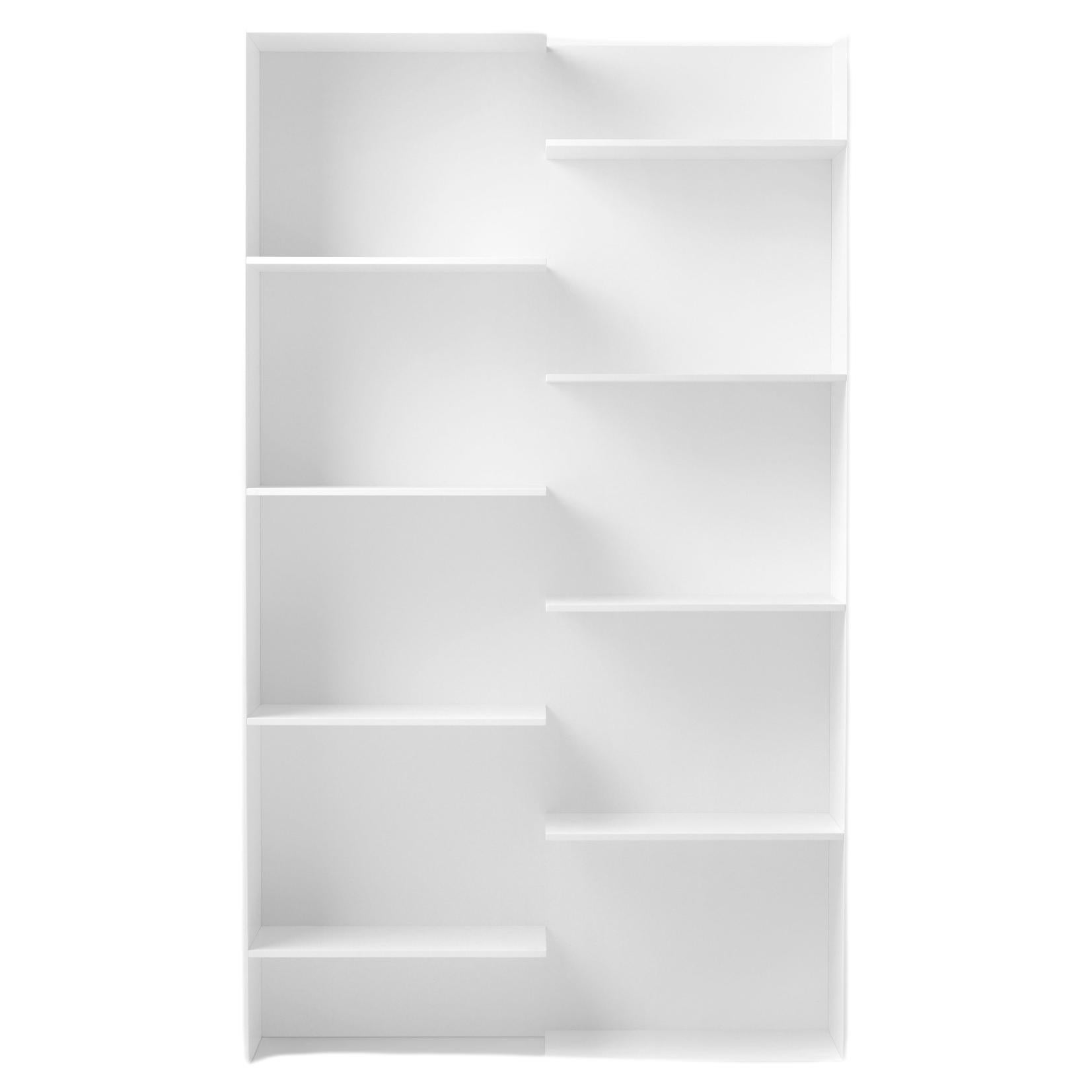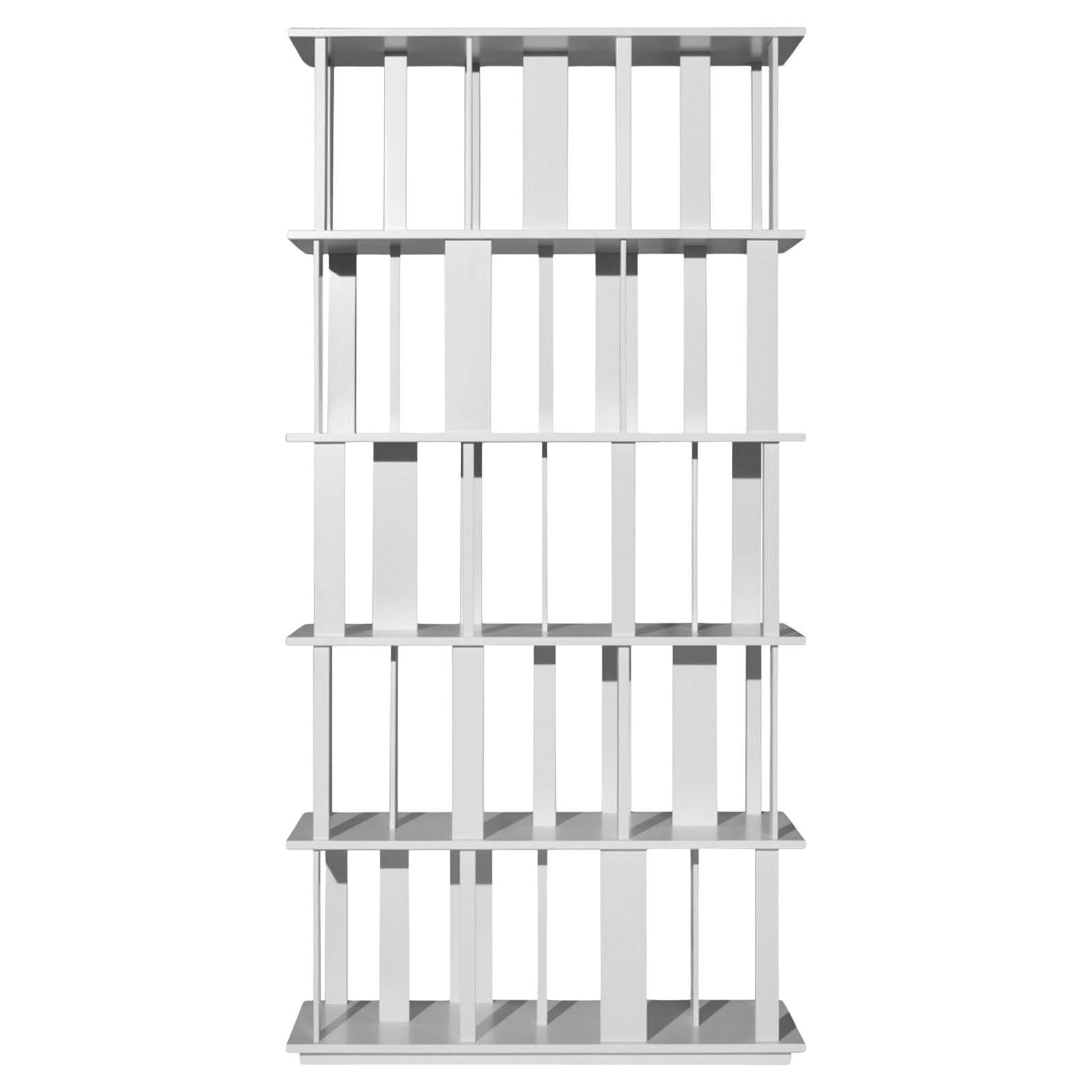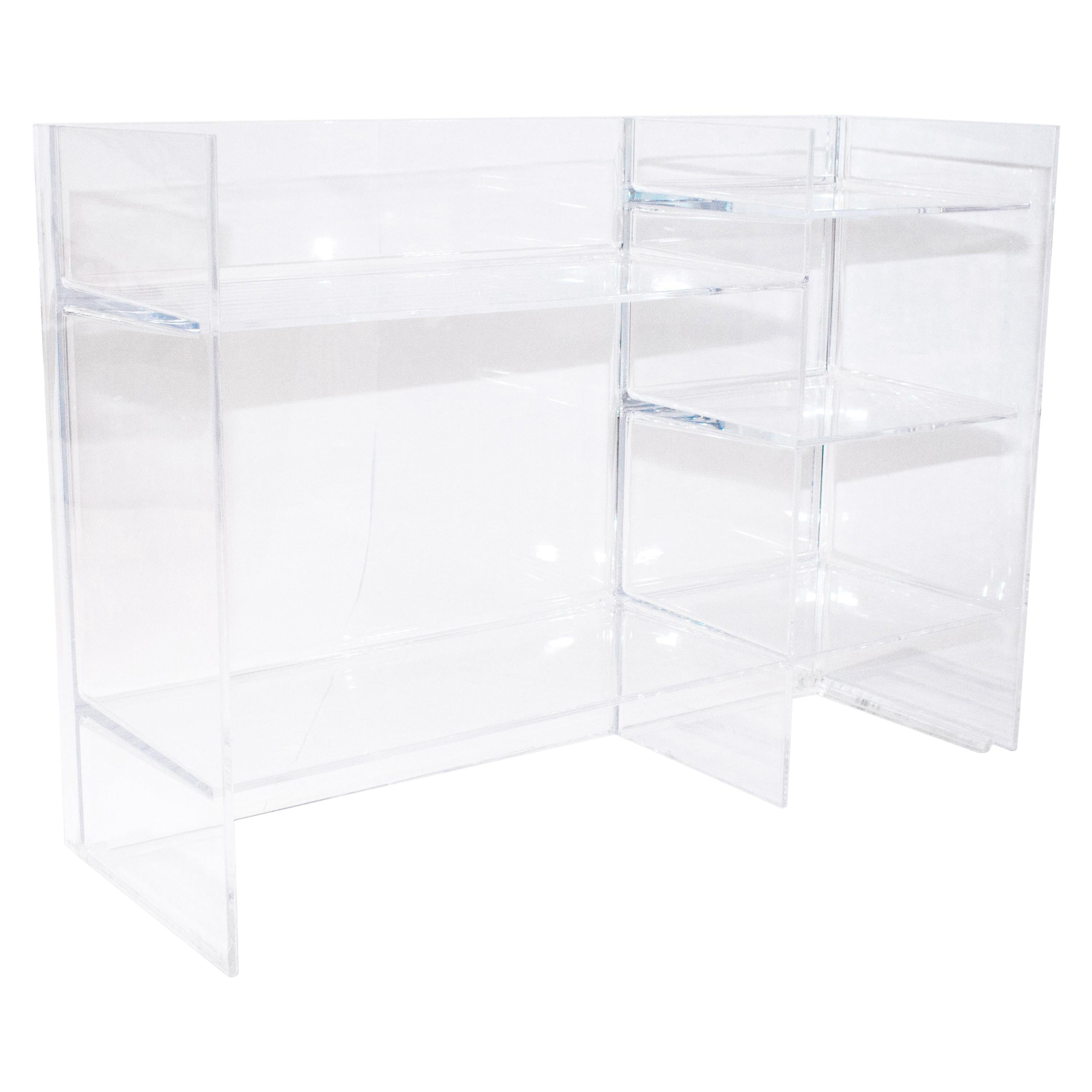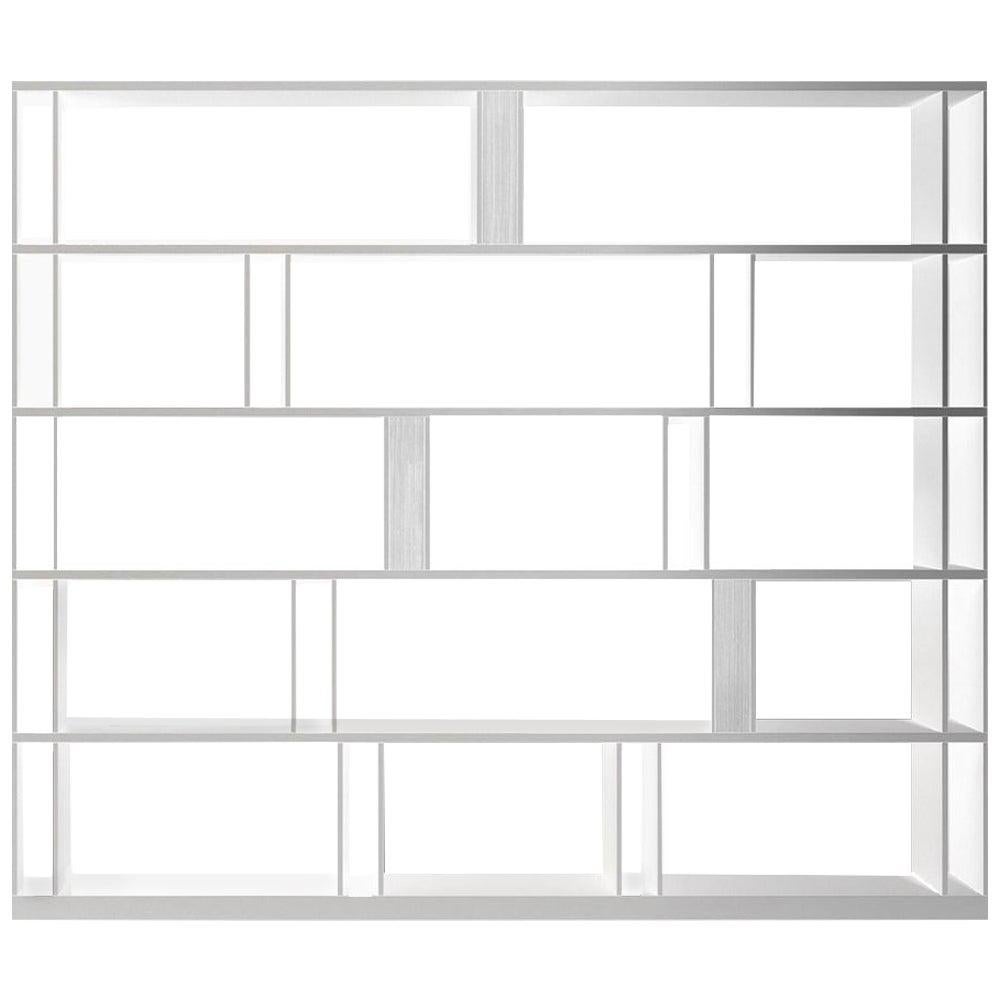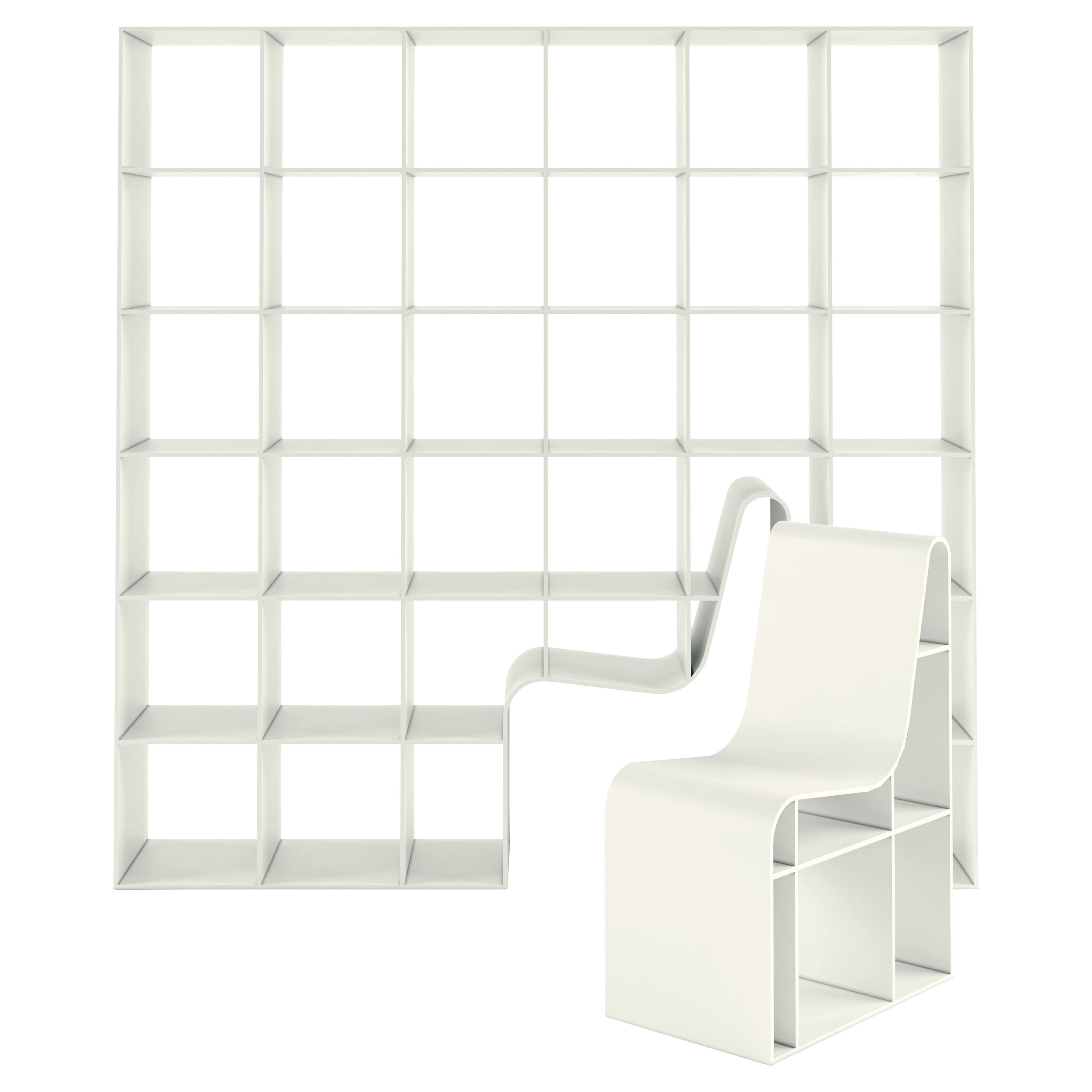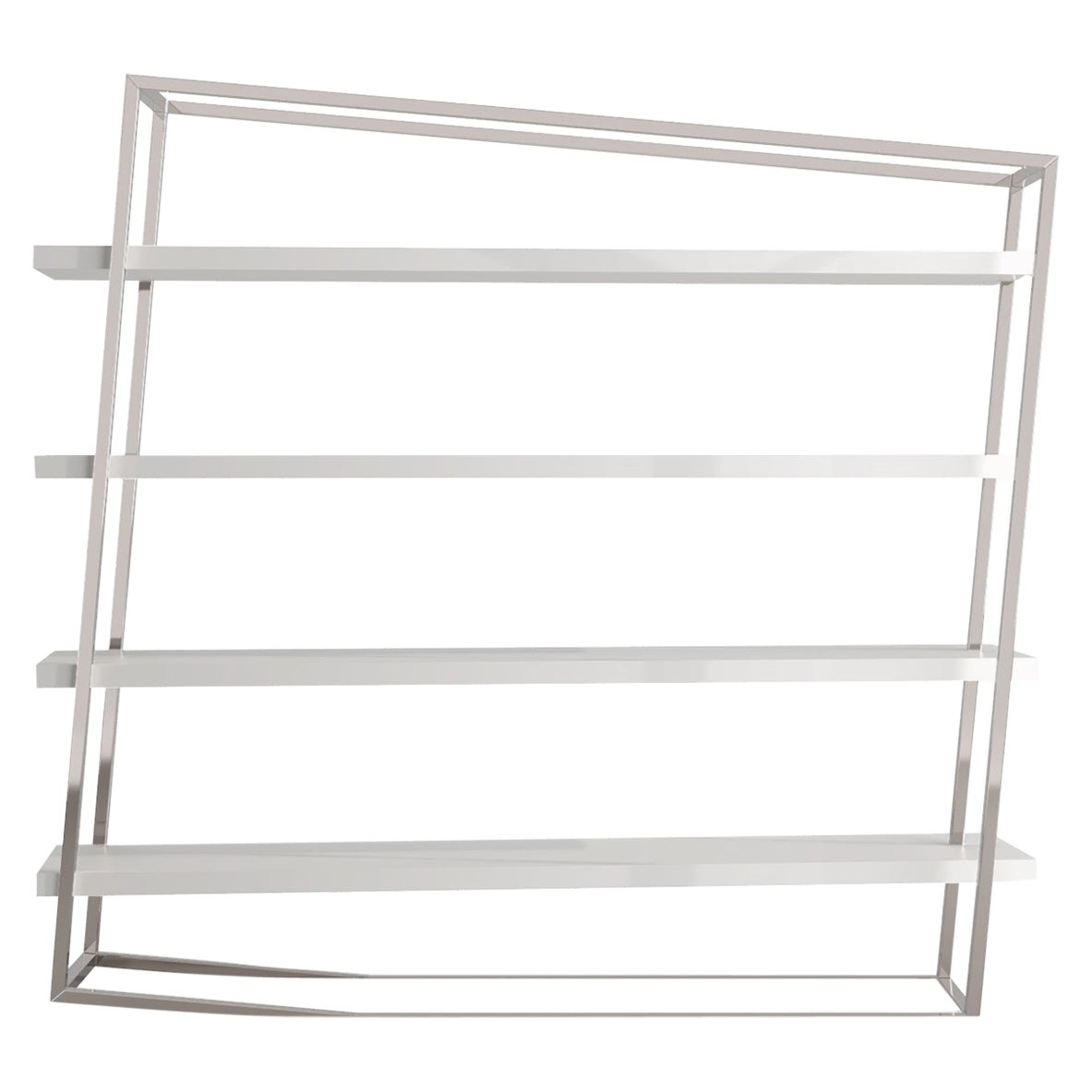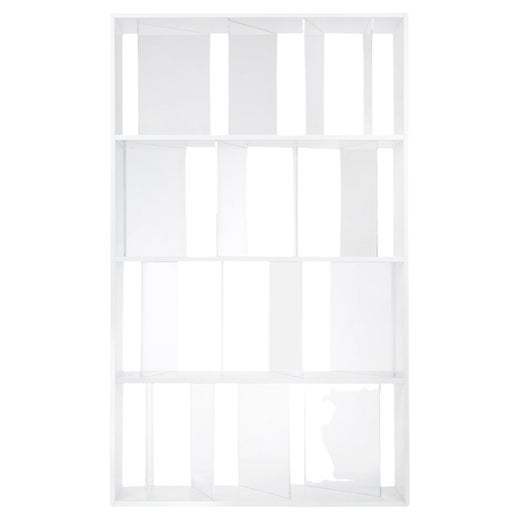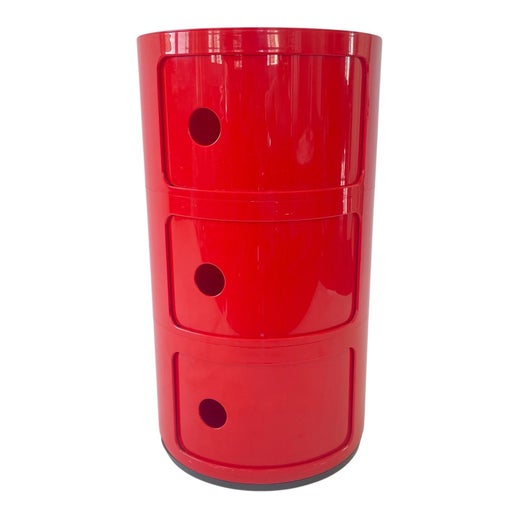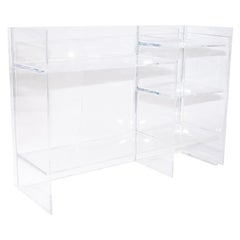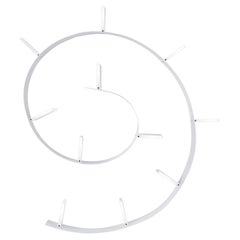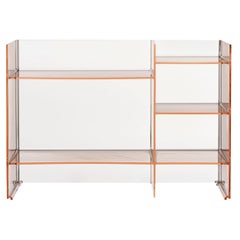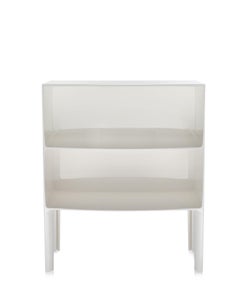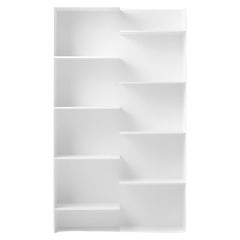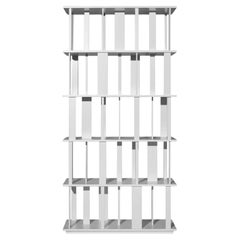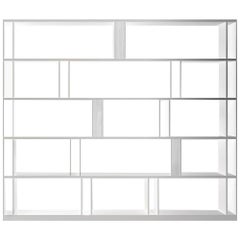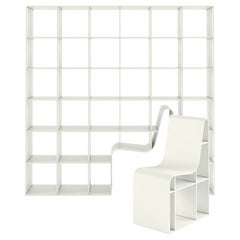Kartell Sundial Modular Bookcase in Crystal and White by Nendo
About the Item
- Creator:
- Dimensions:Height: 64.97 in (165 cm)Width: 39.38 in (100 cm)Depth: 14.57 in (37 cm)
- Style:Modern (In the Style Of)
- Materials and Techniques:
- Place of Origin:
- Period:
- Date of Manufacture:Contemporary
- Production Type:New & Custom(Current Production)
- Estimated Production Time:11-12 weeks
- Condition:
- Seller Location:Brooklyn, NY
- Reference Number:Seller: 8012/041stDibs: LU4536228049302
Nendo
Some pieces of contemporary furniture try to command attention with statement-making forms, while others aim to seduce with pared-down, meticulously detailed perfection. Nendo is remarkable in its ability to blend these two seemingly disparate qualities in objects that are simultaneously provocative and beautiful in their simplicity. And this ability has made the Tokyo- and Milan-based studio one of the most sought-after design firms of the moment.
Nendo is best known for its expansive portfolio of furniture and accessories designed for such luxury makers as Baccarat, Bisazza, Boffi, Cappellini, De Padova, Emeco, FLOS, Foscarini, Fritz Hansen, Kartell, Lasvit, Louis Poulsen, Moroso and Swarovski, as well as for the one-off and limited-edition pieces presented by galleries like New York’s Friedman Benda. But its range is much broader.
Nendo’s full oeuvre runs the gamut from product packaging for such brands as Coca-Cola and Kenzo to large-scale urban-planning and architecture projects, including Tenri Station Plaza CoFuFun, which populated the space in front of a Japanese rail terminal with a series of conical pavilions, turning it into a sort of urban playground for people of all ages.
Whatever the undertaking, the studio’s approach remains the same: embodying lighthearted insights into the human experience in minimalist forms and details. Nendo’s Gaku collection, for the legendary lighting company FLOS, for instance, is based on a simple cup-shaped lamp in a square frame, which can be personalized and changed over time by adding magnetic accessories, including a bookend, mirror, vase and bowl, making it almost as playful as a grown-up dollhouse.
The now iconic Cabbage chair, Nendo’s most recognizable design, offers a whimsical way to deal with trash from the fashion industry. A fat roll of discarded paper used in the production of Issey Miyake’s pleated fabric is simply cut down the middle and its individual layers peeled open to create a seat.
It wasn’t always evident that chief designer and Nendo cofounder Oki Sato would spend his life finding subtle surprises in tables, floor lamps and chairs. He was born in Toronto, where his father worked for Pioneer Electronics, and moved with his family to Tokyo when he was 11. He studied architecture at Waseda University but found the program a little too narrow and rigid for his liking.
After graduating, in 2002, he traveled with friends to the Salone del Mobile in Milan and stumbled into the biggest aha moment of his life: He realized that architects could do more than design buildings — they could also design furniture, lighting and other objects. And the architects at the fair appeared to be enjoying plenty of creative freedom while doing so.
Upon returning to Tokyo, he founded Nendo, whose name means “flexible clay” in Japanese, with his classmate Akihiro Ito, the firm’s managing director. In 2005, they established a second office, in Milan. Within a few years, Nendo had become an omnipresent name at the fair that had inspired them.
Nendo’s wares have been acquired by such institutions as New York’s Museum of Modern Art and Cooper Hewitt, Smithsonian Design Museum; London’s Victoria and Albert; and Paris’s Musée des Arts Décoratifs and Centre Pompidou.
Find Nendo furniture on 1stDibs.
Kartell
The Italian design giant Kartell transformed plastic from the stuff of humble household goods into a staple of luxury design in the 1960s. Founded in Milan by Italian chemical engineer Giulio Castelli (1920–2006) and his wife Anna Ferrieri (1918–2006), Kartell began as an industrial design firm, producing useful items like ski racks for automobiles and laboratory equipment designed to replace breakable glass with sturdy plastic. Even as companies like Olivetti and Vespa were making Italian design popular in the 1950s, typewriters and scooters were relatively costly, and Castelli and Ferrieri wanted to provide Italian consumers with affordable, stylish goods.
They launched a housewares division of Kartell in 1953, making lighting fixtures and kitchen tools and accessories from colorful molded plastic. Consumers in the postwar era were initially skeptical of plastic goods, but their affordability and infinite range of styles and hues eventually won devotees. Tupperware parties in the United States made plastic storage containers ubiquitous in postwar homes, and Kartell’s ingenious designs for juicers, dustpans, and dish racks conquered Europe. Kartell designer Gino Colombini was responsible for many of these early products, and his design for the KS 1146 Bucket won the Compasso d’Oro prize in 1955.
Buoyed by its success in the home goods market, Kartell introduced its Habitat division in 1963. Designers Marco Zanuso and Richard Sapper created the K1340 (later called the K 4999) children’s chair that year, and families enjoyed their bright colors and light weight, which made them easy for kids to pick up and move. In 1965, Joe Colombo (1924–78) created one of Kartell’s few pieces of non-plastic furniture, the 4801 chair, which sits low to the ground and comprised of just three curved pieces of plywood. (In 2012, Kartell reissued the chair in plastic.) Colombo followed up on the success of the 4801 with the iconic 4867 Universal Chair in 1967, which, like Verner Panton’s S chair, is made from a single piece of plastic. The colorful, stackable injection-molded chair was an instant classic. That same year, Kartell introduced Colombo’s KD27 table lamp. Ferrierei’s cylindrical 4966 Componibili storage module debuted in 1969.
Kartell achieved international recognition for its innovative work in 1972, when a landmark exhibition curated by Emilio Ambasz called “Italy: The New Domestic Landscape” opened at New York’s Museum of Modern Art. That show introduced American audiences to the work of designers such as Gaetano Pesce; Ettore Sottsass, founder of the Memphis Group; and the firms Archizoom and Superstudio (both firms were among Italy's Radical design groups) — all of whom were using wit, humor and unorthodox materials to create a bracingly original interior aesthetic.
Castelli and Ferrieri sold Kartell to Claudio Luti, their son-in-law, in 1988, and since then, Luti has expanded the company’s roster of designers.
Kartell produced Ron Arad’s Bookworm wall shelf in 1994, and Philippe Starck’s La Marie chair in 1998. More recently, Kartell has collaborated with the Japanese collective Nendo, Spanish architect Patricia Urquiola and glass designer Tokujin Yoshioka, among many others. Kartell classics can be found in museums around the world, including MoMA, the Victoria and Albert Museum and the Cooper Hewitt, Smithsonian Design Museum. In 1999, Claudio Luti established the Museo Kartell to tell the company’s story, through key objects from its innovative and colorful history.
Find vintage Kartell tables, seating, table lamps and other furniture on 1stDibs.
- ShippingRetrieving quote...Shipping from: Perth Amboy, NJ
- Return Policy
More From This Seller
View All21st Century and Contemporary Italian Modern Shelves
Resin
21st Century and Contemporary Italian Modern Bookcases
Plastic
21st Century and Contemporary Italian Modern Shelves
Resin
21st Century and Contemporary Italian Modern Commodes and Chests of Drawers
Plastic
21st Century and Contemporary Italian Modern Bookcases
Plastic
21st Century and Contemporary Italian Modern Shelves
Resin
You May Also Like
21st Century and Contemporary Italian Bookcases
Wood
1990s Italian Neoclassical Revival Bookcases
Wood
21st Century and Contemporary Italian Modern Bookcases
Lacquer
21st Century and Contemporary Italian Bookcases
Aluminum
21st Century and Contemporary Portuguese Modern Bookcases
Metal, Steel, Cut Steel, Stainless Steel
21st Century and Contemporary Portuguese Modern Bookcases
Metal, Steel, Cut Steel, Stainless Steel
